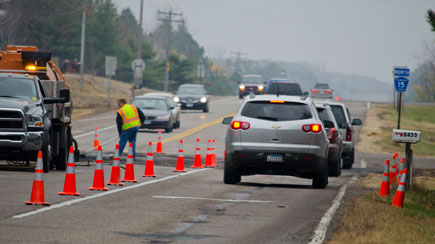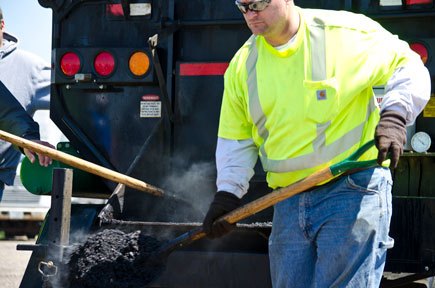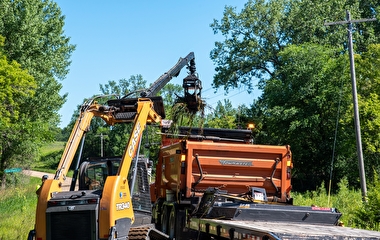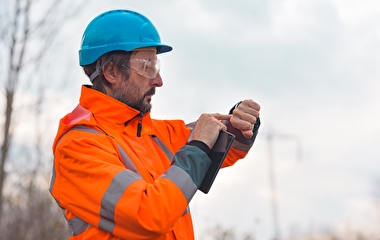For highway workers, work zones can be dangerous or even deadly. Each year more than 20,000 workers are injured and more than 100 lose their lives in U.S. highway work zones; most of those injuries and almost all of those fatalities are caused by either construction vehicles or passing traffic.
“The main solution for making work zones safer has always been reducing the speed limit,” says Imran Hayee, a professor of electrical engineering at the University of Minnesota Duluth. But while strict enforcement of lower speed limits is necessary to make road construction sites as safe as possible, Hayee says, “Lower speed limits alone cannot guarantee workers’ safety because there are serious safety risks from sources other than passing vehicles.”
In a project funded by the Roadway Safety Institute, Hayee is investigating another way to help reduce the number of injuries and fatalities in work zones: by alerting the operators of heavy construction vehicles, as well as drivers in cars passing by work zones, that construction workers are present.
To accomplish this, Hayee and his research team designed and developed a system to improve worker safety by providing visual guidance to construction vehicle operators about a workers’ presence in the vicinity. The system can also improve work-zone traffic mobility by dynamically posting suitable speed limits and other warning messages on variable message signs based on whether workers are present in a work zone.
The new warning system operates using dedicated short-range communication (DSRC) technology and consists of three main components: DSRC-based wearable safety devices, a construction vehicle with an onboard DSRC device and monitor, and DSRC-equipped variable message signs. Workers wear a miniature DSRC-equipped device embedded in their safety vests, which constantly broadcasts each worker’s GPS location to the DSRC device installed on a nearby construction vehicle. The construction vehicle’s DSRC unit is connected to a monitor that shows the vehicle operator the workers’ real-time positions and warns them if a worker is dangerously close. Finally, DSRC-equipped variable message signs placed near the work zone automatically detect workers’ presence and dynamically change the work-zone speed limit when workers are nearby.
“When lower speed limits are permanently in place regardless of workers’ presence, traffic mobility decreases, causing congestion at work-zone sites and increasing the potential for rear-end crashes,” Hayee says. “Our system provides an automated way to post the appropriate speed limits in work zones, which improves traffic mobility without compromising worker safety.”
After developing the prototype system, researchers conducted field tests to demonstrate its functionality and evaluate its performance. Test results show the system works: it’s able to display the workers’ positions on a tablet with acceptable distance and directional accuracy for successful visual guidance. Future plans for the warning system’s development include adding audio warnings, creating a prototype wearable safety device that includes “caution” and “panic” buttons and can be embedded into a worker’s vest, and conducting real-world tests in an active work zone.




